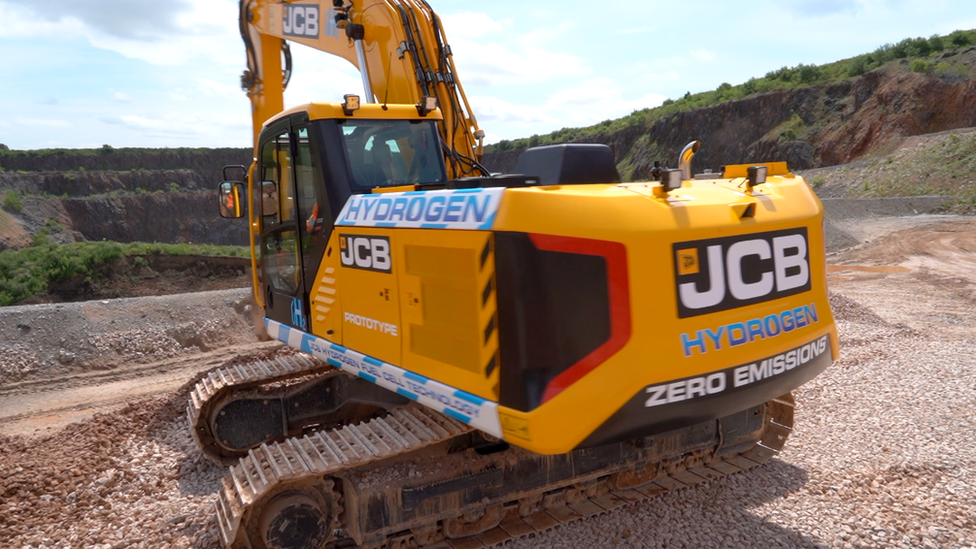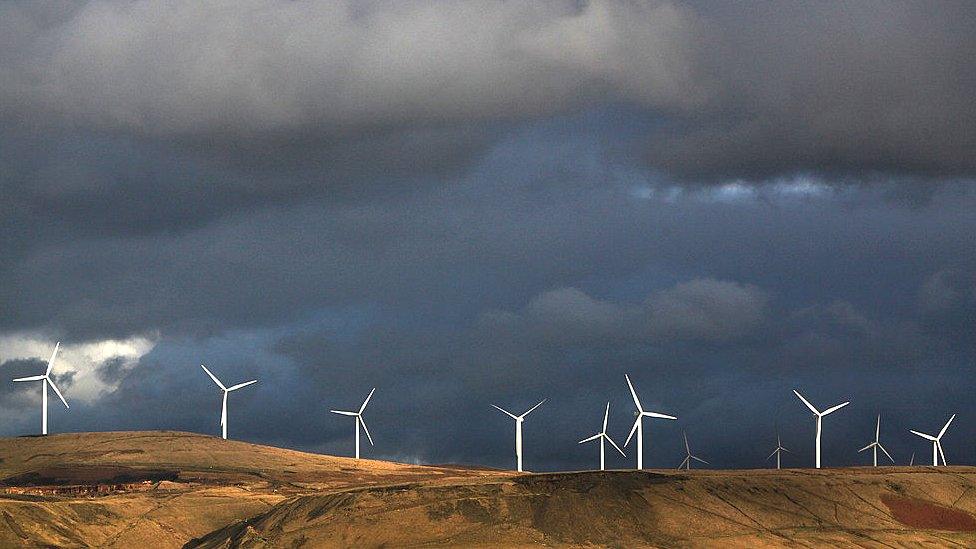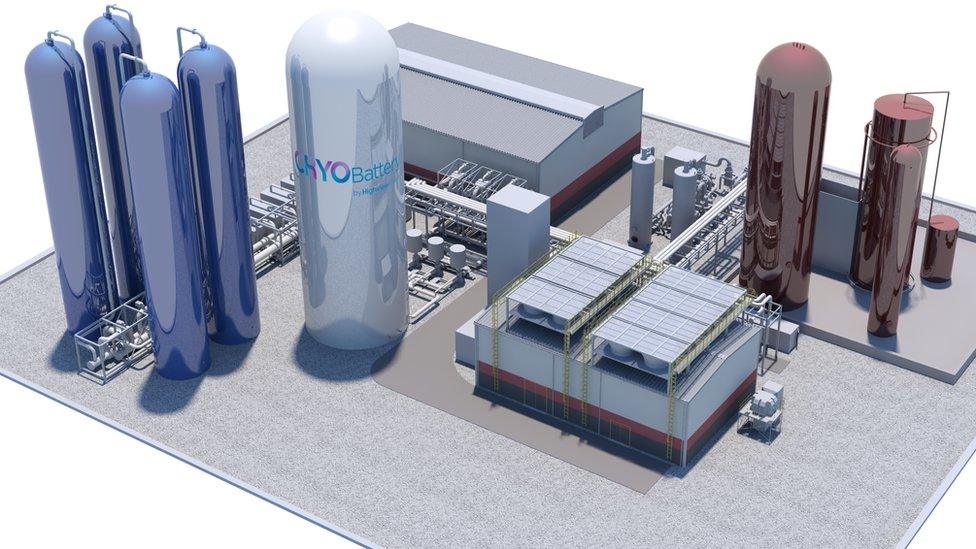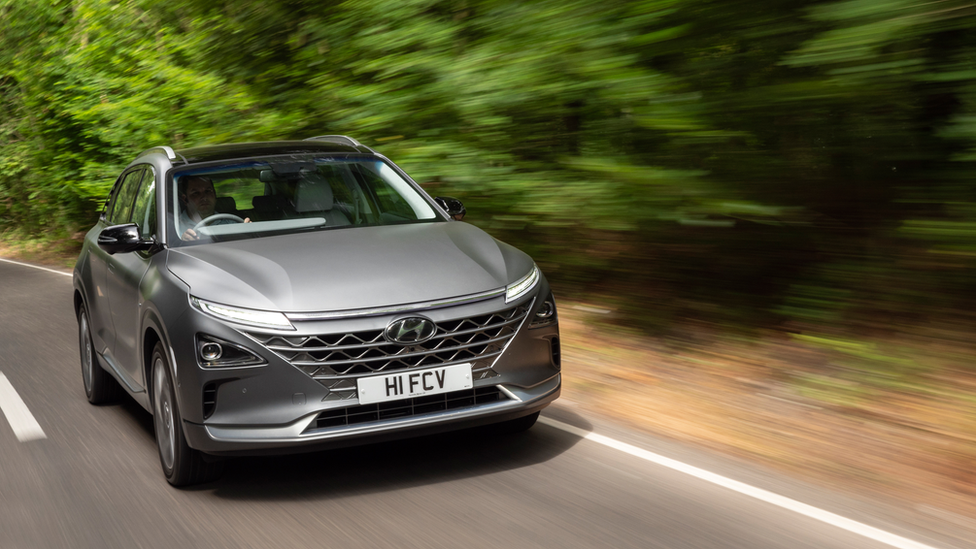Hydrogen power: Firms join forces in bid to lower costs
- Published

Diggers, buses and other heavy vehicles have been developed to be powered by hydrogen
The possibility of a future powered significantly by clean hydrogen has taken a small step closer.
The world’s biggest “green” hydrogen developers have joined forces in what they call the Green Hydrogen Catapult.
Their ambition is to expand production 50-fold in less than six years to radically drive down the cost.
The companies involved include ACWA Power, CWP Renewables, Envision, Iberdrola, Ørsted, Snam, and Yara.
Green hydrogen produced by renewable energy using electrolysis is currently much more expensive than obtaining hydrogen from natural gas.
The firms hope that their economies of scale can drive the cost down to $2 a kg, which recent analysis suggests, external could make it cost-competitive.
Some energy experts doubt whether the objective is achievable, especially as green hydrogen currently costs between 3.5 and 8/kg.
PM's climate vision: 10 steps forward, 10 steps back?
UK energy plant to use liquid air
Is the hydrogen tech 'revolution' hope or hype?
The new initiative will see industry leaders deploy 25 gigawatts of renewables-based production through 2026.
If the target is reached it would make a substantial contribution to world attempts to decarbonise society by helping transform carbon-intensive industries, including power generation, chemicals, steelmaking and shipping, by supplanting use of gas or coal.

Japan has invested heavily in hydrogen storage
Hydrogen could also be used for heavy transport such as buses, trucks and construction vehicles – like the prototype JCB digger.
One potential location for production is the vast, relentlessly sunny Sahara, where solar power is already established.
One member of the consortium, Paddy Padmanathan, from Saudi-backed ACWA said: "Having led the race to deliver photovoltaic energy at well-below $2 cents per kilowatt-hour, we believe collective ingenuity and entrepreneurship can deliver green hydrogen at less than US$2 per kilogram".
"From an industry perspective, we see no technical barriers to achieving this, so it's time to get on with the virtuous cycle of cost reduction through scale up.”

Scotland is the first country in the world to introduce hydrogen powered double-decker buses.
It’s part of a techno-optimistic rush towards hydrogen.
But while the fuel has benefits, says Michael Liebreich, an energy analyst in the UK, “it displays an equally impressive list of disadvantages”.
Techno-optimists
“It does not occur in nature so it requires energy to separate,” Mr Liebreich writes in recent essays for BloombergNEF, external.
“Its storage requires compression to 700 times atmospheric pressure, refrigeration to -253C… It carries one quarter the energy per unit volume of natural gas… It can embrittle metal, it escapes through the tiniest leaks and yes, it really is explosive.”
Despite this, Mr Liebrich says green hydrogen still “holds a vice-like grip over the imaginations of techno-optimists”.
Among that number are the UK's Prime Minister, Boris Johnson, who is preparing a hydrogen strategy, the EU, which has drafted a strategy, and the German government, which is investing $10bn in hydrogen as part of its green recovery.
Follow Roger on Twitter @rharrabin
Related topics
- Published18 November 2020

- Published6 November 2020

- Published1 July 2020
